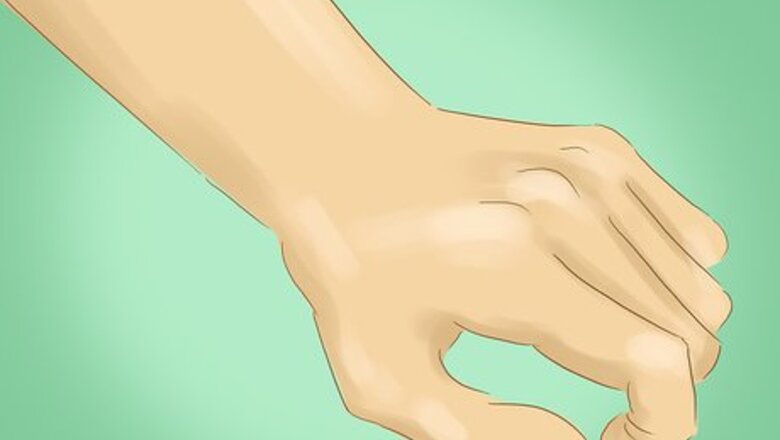
views
X
Trustworthy Source
MedlinePlus
Collection of medical information sourced from the US National Library of Medicine
Go to source
Because wrist pain has so many factors, accurate diagnosing is important for determining the most effective treatment. Regardless, caring for wrist pain at home is similar no matter the cause.
Treating Wrist Pain at Home
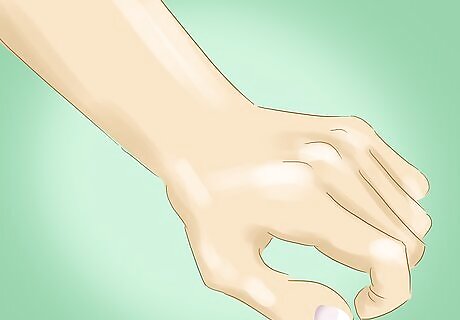
Rest your injured wrist. If you notice pain in one or both of your wrists, take a break from the aggravating activity and rest for a few minutes, hours or even days depending on the trigger of the pain. In addition to rest, keep your wrist elevated above the level of your heart as much as you can to help prevent swelling / inflammation from developing. Taking a 15 minute break at work may be all that's needed to reduce the irritation in your wrist if you do repetitive tasks, such as working as a cashier or constantly typing on a computer. Serious trauma to your wrist, either at work or from playing sports, requires more rest and a doctor's examination (see below).
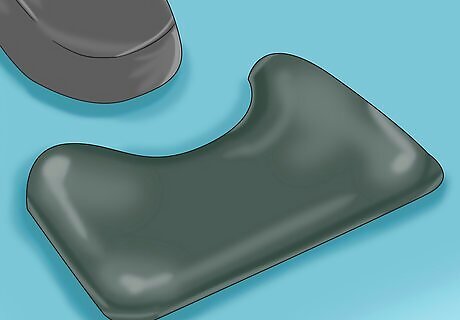
Change your work station. A significant proportion of mild-to-moderate wrist pain is caused by repetitive tasks at work or home. Carpal tunnel syndrome (CTS) is an example of a repetitive stress injury to the wrist that irritates the main nerve running into the hand. To combat repetitive strains / sprains, make adjustments to your work environment, such as: lower your keyboard so your wrists are not extended upward while you type, adjust your chair so that your forearms are parallel to the floor, and use an ergonomic typing pad, mouse and split keyboard. Symptoms of CTS include aching, burning, numbness or tingling sensations in your hand and wrist palm, as well as weakness and reduced dexterity. People who do lots of computer work, cashier jobs, racket sports, sewing, painting, writing and working with vibrating tools are at higher risk for CTS and other repetitive strain injuries.

Wear a wrist splint. Another helpful strategy for preventing and relieving most types of wrist pain is wearing specially designed wrist splints (also called supports or braces). Wrist splints come in many sizes and are made of different materials, but all are designed to relieve wrist pain. Depending on your job / lifestyle, you may want to start with a less restrictive one (made of neoprene, for example) that allows more movement, instead of a stiffer variety that's more supportive and restrictive. You may only have to wear the wrist splint(s) during the day while at work or at the gym to protect your wrists. However, some people also need to wear the splints at night in order to keep their wrists in an extended position, which prevents irritation of nerves and blood vessels. This is common with people dealing with CTS or arthritis. Wrist splints can be purchased at most pharmacies and all medical supply stores. If you ask, your doctor might provide you one at no cost.
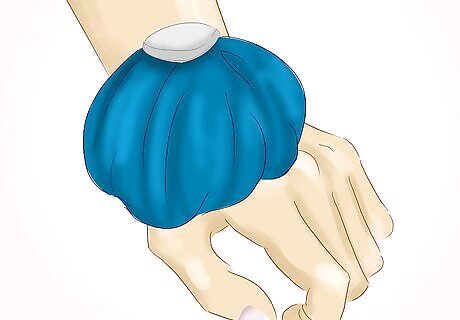
Apply ice to the most tender area. Wrist pain from sudden trauma, such as falling on an outstretched hand or lifting something too heavy, causes immediate pain, inflammation and potential bruising. An effective way of relieving this kind of wrist pain is to apply cold therapy as soon as possible because it reduces / prevents swelling and helps to numb the pain. Types of appropriate cold therapy for the wrist include crushed ice, ice cubes, cold gel packs and small bags of frozen veggies (or fruit) from your freezer. Apply cold therapy to the most tender and inflamed part of your wrist for about 10 to 15 minutes at a time, every hour, for approximately five hours post injury for best results. Whichever type of cold therapy you use, don't put it directly onto the skin of your wrist. Instead, wrap it in a thin cloth or towel first in order to prevent frostbite.
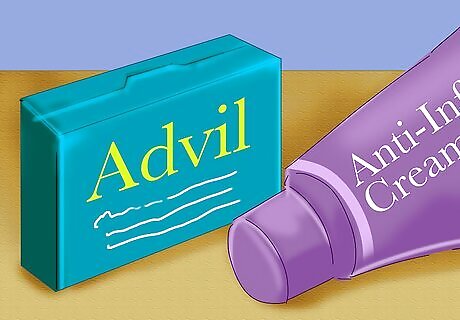
Take over-the-counter (OTC) medication. Regardless if your wrist pain is acute (from a sudden injury) or chronic (lasting for more than a few months), taking OTC medication can be helpful for pain control and allowing more functionality and range of movement. OTC anti-inflammatories, such as ibuprofen and naproxen, are often more effective for acute wrist pain because they combat both pain and inflammation. On the other hand, painkillers such as acetaminophen are more appropriate for chronic issues like arthritis. Short term use of OTC anti-inflammatories and painkillers (less than two weeks at a time) is recommended to avoid common side effects, such as stomach irritation, intestinal upset and reduced organ function (liver, kidneys). Don't combine anti-inflammatories and painkillers at the same time, and always follow the dosing information on the packaging for the safest results.
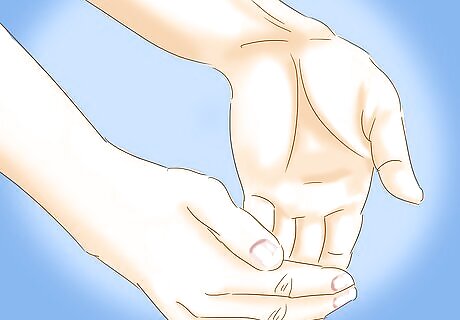
Do some stretching and strengthening. As long as your wrist isn't broken or severely inflamed, do some flexibility and strengthening exercises every day in order to prevent and combat wrist pain. Increasing the flexibility and strength in the ligaments and tendons of your wrists enables them to withstand more "wear and tear" from your job and working out. And with CTS, stretching will take the pressure off the median nerve that innervates the muscles of the hand. An effective extension-type stretch for the wrists involves striking a pray position with both of your palms together. Then raise your elbows up until you feel a nice stretch in your wrists. Hold for about 30 seconds and do it three to five times daily for best results. Wrist strengthening can be done with light free weights (less than 10 pounds) or rubber bands / tubing. Hold your hands out with your palms facing up and grip the weights or handles of the tubing. Then flex your wrists towards your body against the tension. Always stretch and strengthen both wrists together at the same time, even if only one is hurting you. Both sides should have similar strength and flexibility regardless of which hand is more dominant.
Getting Treatment for Wrist Pain
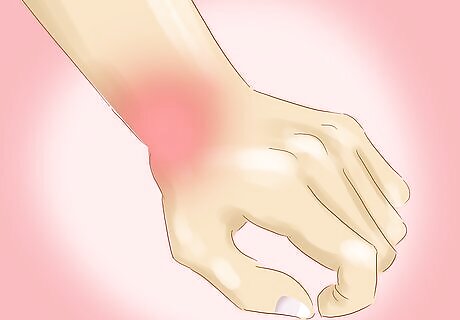
Make an appointment with your physician. If your wrist pain lasts for more than a week or you are in severe pain, make an appointment with your family doctor for a examination. Your doctor may take x-rays to see if your wrist bones are broken, dislocated, infected or arthritic. Your doctor may also take a blood test to rule out an infection, gout or inflammatory types of arthritis, such as rheumatoid arthritis. Signs of a broken or dislocated wrist include: severe pain, significantly reduced range of motion, unnatural angles (crooked) and widespread swelling and bruising. Fractures can occur in the small bones of your wrist (carpals) or at the ends of your forearm bones (radius and ulna). Slip and falls and punching solid objects are common causes of wrist fractures. Bone infections of the wrist are rare, but do happen in illicit drug users and can be triggered by trauma. Severe pain, swelling, skin discoloration, nausea and a fever are signs of a bone infection.

Take stronger prescription medications. For more serious injuries and more advanced or serious forms of arthritis, stronger prescription medication may be needed longer term to manage the pain and inflammation in your wrist(s). Examples of prescription non-steroidal anti-inflammatory drugs (NSAIDs) include: diclofenac, Fenoprofen, indomethacin. COX-2 inhibitors, such as Celebrex, are a slightly different types of NSAID that are a little easier on the stomach. Osteoarthritis of the wrist is the "wear and tear" type and typically causes stiffness, achy pain and grinding sounds with movement. Rheumatoid arthritis of the wrist is much more painful, inflamed and disfiguring. Disease-modifying anti-rheumatic drugs (DMARDs) are able to combat some forms of inflammatory arthritis by suppressing your immune system. Biologic response modifiers (biologics) are another type of prescription drug used for rheumatoid arthritis, but they must be injected. They also work by altering the function of your immune system.
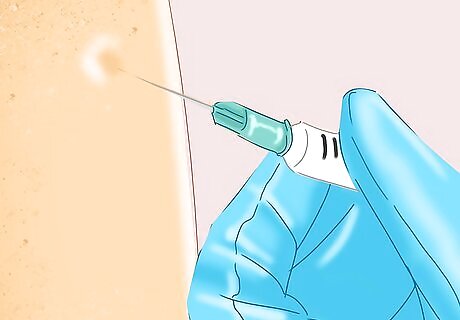
Ask about steroidal injections. Another type of anti-inflammatory medication is corticosteroids, which can be taken by pill, but they are usually injected into the wrist if the pain doesn't go away after a few months. Corticosteroids combat swelling and pain quickly and effectively, but they can cause weakening in the tendons and bones of the wrist. As such, treatments are limited to three to four injections per year typically. Severe tendonitis, bursitis, CTS, stress fractures and flare-ups of inflammatory arthritis are all reasons to consider a corticosteroid injection. The procedure is quick and can be done by your doctor. Results are often felt within minutes and can be dramatic, at least for a few weeks or months.
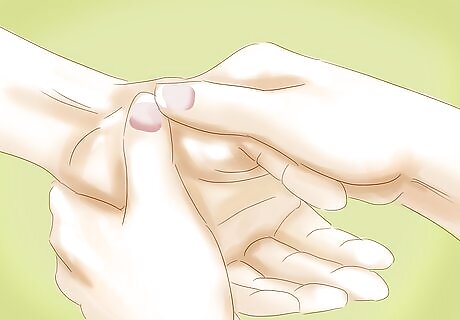
Get a referral for physiotherapy. If you wrist pain is chronic and also involves weakness, your doctor may refer you to a physical therapist in order to teach you tailored and specific stretches and exercises. They may also mobilize your joints to prevent them from getting too stiff, which is beneficial for osteoarthritis. Physical therapy is also very helpful for rehabilitating your wrist after any surgical procedure. Your physical therapist may also use electronic machines to help with strengthening and pain relief, such as muscle stimulation, therapeutic ultrasound and TENS devices. Physiotherapy treatments are usually 3x per week and last for 4-6 weeks for most chronic problems of the wrist.

Consider surgery if need be. In some serious cases of wrist pain, surgery may be necessary, particularly to repair severely broken bones, dislocated joints, torn tendons and tight ligaments. For significant bone fractures, your surgeon may need to use metal hardware in your wrist, such as plates, pins and screws. Most surgeries of the wrist are performed arthroscopically, which is a long, small cutting tool with a camera on the end. Smaller stress or hairline fractures of the wrist typically don't need surgery -- they are either casted or braced for a few weeks. Carpal tunnel surgery is relatively common and involves cutting into the wrist and/or hand to relieve pressure on the median nerve. Recovery time can be up to 6 weeks.


















Comments
0 comment